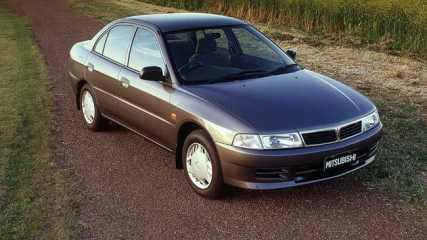Used Mitsubishi Lancer review: 1996-2004
By Graham Smith · 21 Oct 2011
Quality, condition and service history are the most important things to consider when choosing a cheaper car for the young motorist.Buy the best car you can afford, in the best condition, with a solid service history and you shouldn't go wrong.Most young drivers, or their parents, usually have a limited amount of money to spend, which necessitates looking at older models to find the ones that fit. Buying a quality older car almost certainly means buying one from a Japanese carmaker, such as the CE Mitsubishi Lancer.Mitsubishi launched the CE Lancer in 1996 and it ran until 2004. Prices now range around $1500 for the earliest examples to as much as $7000 for the last ones. It's available in practical sedan and wagon body styles, and a coupe, which is likely to be the most appealing to young drivers.Two four-cylinder single overhead camshaft engines were offered. One was a 1.5-litre, the other a larger 1.8-litre unit, both of which offered a combination of solid performance and good fuel economy. The GLi was the entry model and came in sedan and coupe form.It came standard with power steering, cloth trim, full wheel trims, and a fairly basic two-speaker sound system. For more there was the GLXi sedan and wagon that came with central locking, power mirrors and four-speaker sound.IN THE SHOPThe Lancer has an enviable reputation for reliability, but it depends heavily on being well serviced. Walk away from any car that hasn't been properly maintained, even if it appears a cheap buy. Mechanics who regularly work on them say the Lancer gives little trouble, although they stress that it's important to change the cam-timing belt as per Mitsubishi's recommendation of 90,000 km.Older cars tend to get knocked about by owners who couldn't care less, so look closely for panel damage that has been poorly repaired. Under the bonnet look for oil leaks around the engine and gearbox.IN A CRASHGenerally, the Lancer is a strong little car that stands up well in crash testing, making it a safe choice for young drivers. Importantly, Mitsubishi added dual front airbags in 2001, which makes that a key consideration when shopping. ANCAP rated the dual airbag model at 3 stars.UNDER THE PUMPMitsubishi claimed the Lancer averaged around 6.5 L/100 km in their lab tests, which makes it an economical little car. It took 91-octane unleaded fuel and Mitsubishi gave E10 ethanol blend fuel a tick.AT A GLANCEPrice new: $20,730 to $26,950Engine: 1.5-litre 4-cylinder; 69 kW/126 Nm 1.8-litre 4-cylinder; 86 kW/161 NmTransmission: 5-speed manual, 4-speed auto, front-wheel driveEconomy: 6.5 L/100 km Body: 4-door sedan, 4-door wagon, 2-door coupeVariants: GLi, GLXi Safety: 3-star ANCAP
.jpg)




